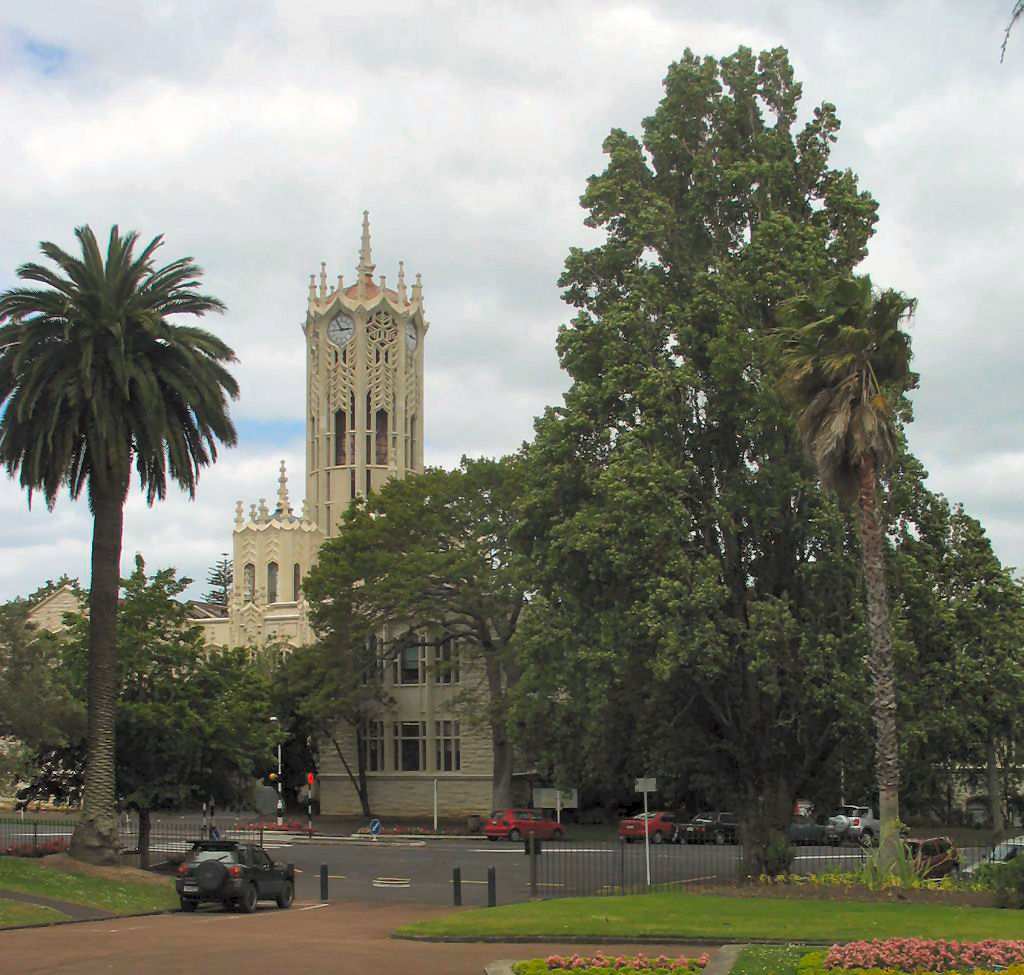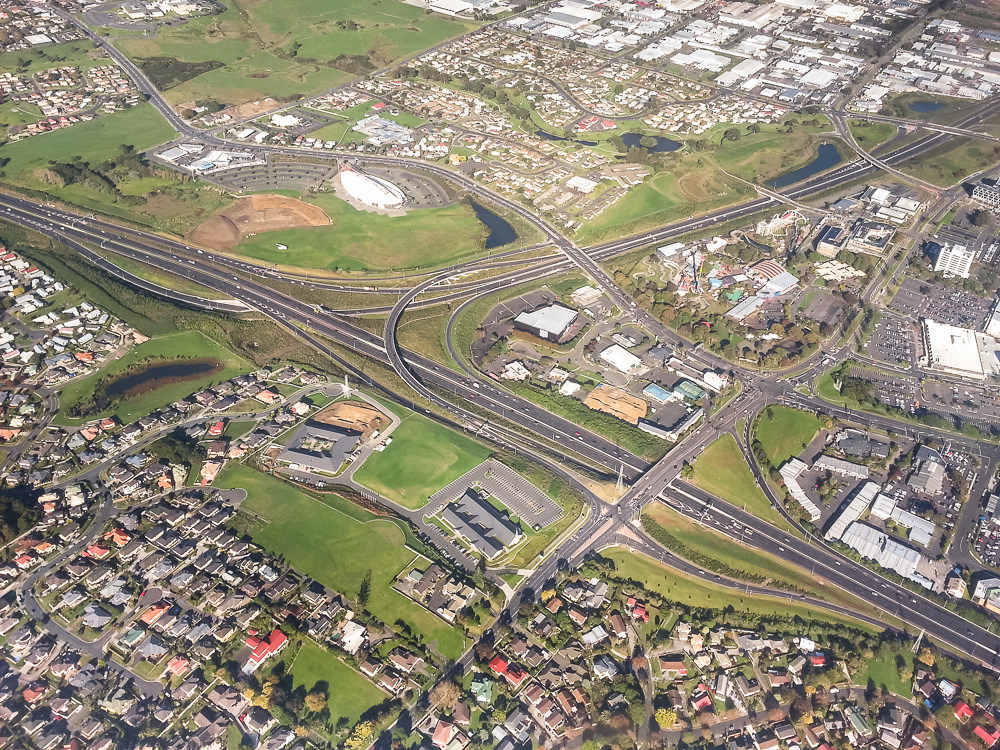|
Te Wānanga O Aotearoa
Te Wānanga o Aotearoa is an indigenous tertiary education provider with over 80 campuses throughout New Zealand. As a Māori-led organisation grounded in Māori values, Te Wānanga o Aotearoa is committed to the revitalisation of Māori cultural knowledge. It is also focused on breaking inter-generational cycles of non-participation in tertiary education to reduce poverty and eliminate associated social issues. The organisation works towards "whānau transformation through education". Te Wānanga o Aotearoa is one of three such wānanga organisations in New Zealand, and is currently one of the largest public tertiary education institutions in the nation. History Te Wānanga o Aotearoa was founded in 1984 to provide training and education for those whose needs were not being met by the mainstream education system. The genesis of what would become Te Wānanga o Aotearoa emerged as the brainchild of Te Awamutu College board of governors' member Rongo Wetere and Māori Studies ... [...More Info...] [...Related Items...] OR: [Wikipedia] [Google] [Baidu] |
Wānanga
In the education system of New Zealand, a wānanga is a publicly-owned tertiary institution that provides education in a Māori cultural context. Section 162 of the New Zealand Education Act of 1989 specifies that wānanga resemble mainstream universities in many ways but expects them to be: :"... characterised by teaching and research that maintains, advances, and disseminates knowledge and develops intellectual independence, and assists the application of knowledge regarding ahuatanga Maori (Maori tradition) according to tikanga Maori (Maori custom)." Wānanga educational programmes, accredited through the New Zealand Qualifications Authority (NZQA) and through the Ministry of Education, are partly governed by New Zealand's Tertiary Education Commission (TEC). Wānanga offer certificates, diplomas, and bachelor-level degrees, with some wānanga providing programmes in specialized areas up to doctorate level. Outside the 21st-century formal education system, t ... [...More Info...] [...Related Items...] OR: [Wikipedia] [Google] [Baidu] |
Pakaariki Harrison
Pakaariki "Paki" Harrison (6 July 1928 – 29 December 2008) was a New Zealand master carver from Ngāti Porou. He is regarded as one of New Zealand's greatest carvers. Early life Harrison was born in Ruatoria, the eldest of 21 children. He was raised by his grandmother Materoa Reedy and attended Hiruhārama Native School. Whilst attending Te Aute College, Harrison was introduced to carving by master carver, Pine Taiapa who became a lifelong influence. He was educated at Massey University and Auckland Teachers College. Marriage Harrison married Hinemoa Rakena (b. 1931), also a Māori artist, who is noted for her traditional weaving, especially tukutuku panelling. Between them, they worked on the construction and decoration of many wharenui and other marae buildings. Carving Ranginui Walker writes that Harrison possessed "immense knowledge about the traditional arts of the carver, extending way beyond the actual physical arts to include its most ancient aspects - the symbol ... [...More Info...] [...Related Items...] OR: [Wikipedia] [Google] [Baidu] |
Pacific Islander
Pacific Islanders, Pasifika, Pasefika, or rarely Pacificers are the peoples of the Pacific Islands. As an ethnic/racial term, it is used to describe the original peoples—inhabitants and diasporas—of any of the three major subregions of Oceania ( Melanesia, Micronesia, and Polynesia). Melanesians include the Fijians ( Fiji), Kanaks ( New Caledonia), Ni-Vanuatu ( Vanuatu), Papua New Guineans ( Papua New Guinea), Solomon Islanders (Solomon Islands), and West Papuans ( Indonesia's West Papua). Micronesians include the Carolinians ( Northern Mariana Islands), Chamorros ( Guam), Chuukese ( Chuuk), I-Kiribati ( Kiribati), Kosraeans (Kosrae), Marshallese ( Marshall Islands), Palauans (Palau), Pohnpeians ( Pohnpei), and Yapese (Yap). Polynesians include the New Zealand Māori (New Zealand), Native Hawaiians ( Hawaii), Rapa Nui (Easter Island), Samoans ( Samoa and American Samoa), Tahitians ( Tahiti), Tokelauans (Tokelau), Niueans ( Niue), Cook Islands Māo ... [...More Info...] [...Related Items...] OR: [Wikipedia] [Google] [Baidu] |
Whakapapa
Whakapapa (, ), or genealogy, is a fundamental principle in Māori culture. Reciting one's whakapapa proclaims one's Māori identity, places oneself in a wider context, and links oneself to land and tribal groupings and the mana of those. Experts in ''whakapapa'' can trace and recite a lineage not only through the many generations in a linear sense, but also between such generations in a lateral sense. Link with ancestry Raymond Firth, an acclaimed New Zealand economist and anthropologist during the early 20th century, asserted that there are four different levels of Maori kinship terminology that are as follows: Some scholars have attributed this type of genealogical activity as being tantamount to ancestor worship. Most Māori would probably attribute this to ancestor reverence. Tribes and sub-tribes are mostly named after an ancestor (either male or female): for example, ''Ngati Kahungunu'' means 'descendants of ''Kahungunu (a famous chief who lived mostly in what is now ... [...More Info...] [...Related Items...] OR: [Wikipedia] [Google] [Baidu] |
Tertiary Education In New Zealand
Tertiary education in New Zealand is provided by universities, institutes of technology and polytechnics, private training establishments, industry training organisations, and wānanga (Māori education). It ranges from informal non-assessed community courses in schools through to undergraduate degrees and research-based postgraduate degrees. All post-compulsory education is regulated within the New Zealand Qualifications Framework, a unified system of national qualifications for schools, vocational education and training, and 'higher' education. The New Zealand Qualifications Authority (NZQA) is responsible for quality assuring all courses and tertiary education organisations other than universities. Under the Education Act 1989, The Committee on University Academic Programmes (CUAP) and the Academic Quality Agency (AQA) have delegated authority for quality assurance of university education. The Tertiary Education Commission (TEC) is responsible for administering the funding of te ... [...More Info...] [...Related Items...] OR: [Wikipedia] [Google] [Baidu] |
Controller And Auditor-General Of New Zealand
The Controller and Auditor-General (the Auditor-General) is an Officer of the New Zealand Parliament responsible for auditing public bodies. John Ryan began his seven-year term as Controller and Auditor-General on 2 July 2018. The Deputy Controller and Auditor-General is Greg Schollum. Their mandate and responsibilities are set out in the Public Audit Act 2001. They are appointed by the Governor-General on the recommendation of the House of Representatives. Role and functions Public entities are accountable to Parliament and the public for their use of public resources and powers conferred by Parliament. The Auditor-General provides independent assurance that public entities are operating, and accounting for their performance, in keeping with Parliament's intentions. The Auditor-General is independent of executive government and Parliament in discharging the functions of the statutory office, but is answerable to Parliament for stewardship of the public resources entrusted to her. ... [...More Info...] [...Related Items...] OR: [Wikipedia] [Google] [Baidu] |
New Zealand Qualifications Authority
The New Zealand Qualifications Authority (NZQA; mi, Mana Tohu Mātauranga o Aotearoa) is the New Zealand government Crown entity tasked with administering educational assessment and qualifications. It was established by the Education Act 1989. NZQA administers the National Certificate of Educational Achievement (NCEA) and the New Zealand Scholarship for secondary school students. It is also responsible for the quality assurance of non-university, tertiary training providers, the New Zealand Register of Quality Assured Qualifications, and the New Zealand Qualifications Framework (National Qualifications Framework). It has further roles in evaluating overseas qualifications. In July 1990 it took over the work of the former Universities Entrance Board, the Ministry of Education's examinations, the Trades Certification Board and the Authority for Advanced Vocational Awards. NZQA is funded from the central government as well as fees, with the budget being about $70 million eac ... [...More Info...] [...Related Items...] OR: [Wikipedia] [Google] [Baidu] |
Manukau
Manukau (), or Manukau Central, is a suburb of South Auckland, New Zealand, centred on the Manukau City Centre business district. It is located 23 kilometres south of the Auckland Central Business District, west of the Southern Motorway, south of Papatoetoe, and north of Manurewa. The industrial and commercial suburb of Wiri lies to the east and south. The suburb is named after the previous Manukau City district, named in 1965 by a poll of residents. The headquarters of Manukau City Council were in Manukau Central until the council was merged into Auckland Council in November 2010. Manukau Central should not be confused with the much larger Manukau City, which was the entire area administered by the city council. Demographics Manukau covers and had an estimated population of as of with a population density of people per km2. Manukau had a population of 3,450 at the 2018 New Zealand census, an increase of 318 people (10.2%) since the 2013 census, and an increase o ... [...More Info...] [...Related Items...] OR: [Wikipedia] [Google] [Baidu] |
Hamilton, New Zealand
Hamilton ( mi, Kirikiriroa) is an inland city in the North Island of New Zealand. Located on the banks of the Waikato River, it is the seat and most populous city of the Waikato region. With a territorial population of , it is the country's fourth most-populous city. Encompassing a land area of about , Hamilton is part of the wider Hamilton Urban Area, which also encompasses the nearby towns of Ngāruawāhia, Te Awamutu and Cambridge. In 2020, Hamilton was awarded the title of most beautiful large city in New Zealand. The area now covered by the city was originally the site of several Māori villages, including Kirikiriroa, from which the city takes its Māori name. By the time English settlers arrived, most of these villages, which sat beside the Waikato River, were abandoned as a result of the Invasion of Waikato and land confiscation (''Raupatu'') by the Crown. Initially an agricultural service centre, Hamilton now has a diverse economy and is the third fastest growin ... [...More Info...] [...Related Items...] OR: [Wikipedia] [Google] [Baidu] |
Māori Language
Māori (), or ('the Māori language'), also known as ('the language'), is an Eastern Polynesian language spoken by the Māori people, the indigenous population of mainland New Zealand. Closely related to Cook Islands Māori, Tuamotuan, and Tahitian, it gained recognition as one of New Zealand's official languages in 1987. The number of speakers of the language has declined sharply since 1945, but a Māori-language revitalisation effort has slowed the decline. The 2018 New Zealand census reported that about 186,000 people, or 4.0% of the New Zealand population, could hold a conversation in Māori about everyday things. , 55% of Māori adults reported some knowledge of the language; of these, 64% use Māori at home and around 50,000 people can speak the language "very well" or "well". The Māori language did not have an indigenous writing system. Missionaries arriving from about 1814, such as Thomas Kendall, learned to speak Māori, and introduced the Latin alphabet. In 1 ... [...More Info...] [...Related Items...] OR: [Wikipedia] [Google] [Baidu] |
Whakairo
Toi whakairo (art carving) or just whakairo (carving) is a Māori traditional art of carving in wood, stone or bone. History Timber was formed into houses, fencepoles, pouwhenua, containers, taiaha, tool handles and waka (boats). Carving tools were made from stone, preferably the very hard pounamu (greenstone). Bone was used for fish hooks and needles amongst other things. Designs on carvings depict tribal ancestors, and are often important for establishing iwi and hapu identity. After European contact, many traditionally carved items were no longer widely produced in favour of using Western counterparts, such as waka huia treasure containers being replaced with lockable seaman's chests by the 1840s. Traditionally, many expert carvers focused on creating elaborate waka taua (war canoes), however this declined during the 1860s when waka taua were superseded by whaleboats or small European style sailing ships. During the decline, carvers focused instead on carved marae, obj ... [...More Info...] [...Related Items...] OR: [Wikipedia] [Google] [Baidu] |







.jpg)